Cava is a sparkling wine that has been produced in Spain for over a century. It is a popular alternative to champagne and is often more affordable. Cava is made using the similar methods as for champagne or cremant, but with different grape varieties.
Cava is a legally defined Designation of Origin (D.O.) for sparkling wine in Spain. It is produced primarily in Catalonia, with around 95% of cava coming from this region. The wine is made from three grape varieties – Macabeo, Parellada, and Xarel·lo – and is fermented in contact with its lees for 15 to 18 months before bottling.
Cava is known for its dry, refreshing, and flavorful taste. It pairs well with food and makes a great aperitif. In recent years, the quality of cava has improved, making it a great value for wine enthusiasts. In this expert guide, we will delve deeper into what cava is, how it is made, and what makes it unique.
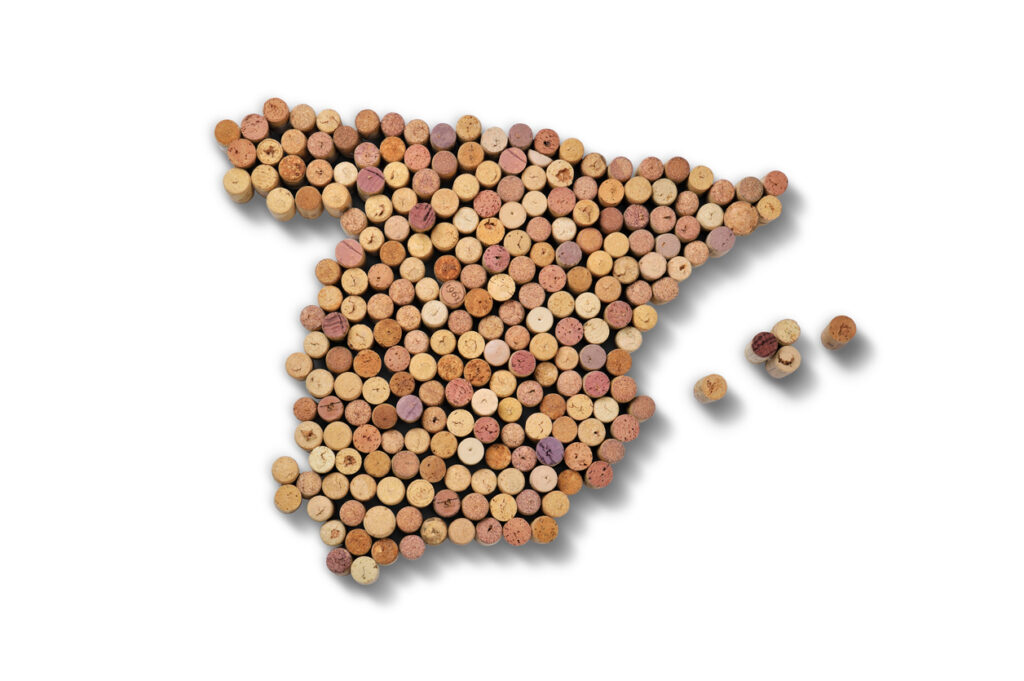
What is Cava?
Cava is a sparkling wine that originates from Catalonia, Spain. It is made using the traditional method, which is the same method used to make Champagne. Cava is made from a blend of three grape varieties: Macabeo, Parellada, and Xarel·lo, although other grape varieties such as Chardonnay, Pinot Noir, Garnacha, and Monastrell can also be used in some styles of Cava.
History
Cava was first produced in the late 19th century when Josep Raventós, a Spanish winemaker, visited the Champagne region of France and was inspired to create a similar sparkling wine in Spain. The first Cava was produced in 1872, and it quickly gained popularity in Spain and around the world.

Production Process
The production process for Cava is similar to that of Champagne. The grapes are harvested by hand and then pressed to extract the juice. The juice is then fermented in stainless steel tanks or oak barrels. After the first fermentation, the wine is blended and bottled with a mixture of sugar and yeast, which triggers a second fermentation in the bottle. This is where the bubbles are created.
Cava is aged on its lees for a minimum of 9 months, although some styles of Cava can be aged for up to 36 months. The longer the aging process, the more complex the flavors and aromas of the wine become.
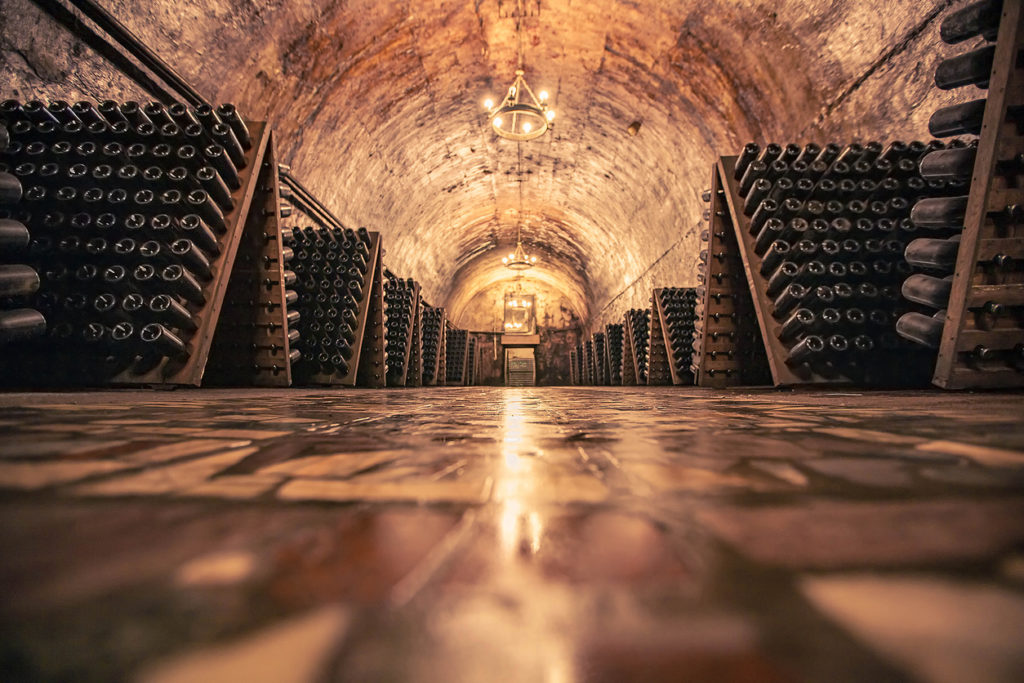
Cava is available in a range of styles, from young and fresh to toasty and longer aged. Most young Spanish Cavas have flavors of citrus, apples, and minerals, while aged Cavas evoke mushrooms, buttery toast, and nuts. It can also be made as a rosé, using Garnacha or Pinot Noir grapes.
Cava DO
Cava is a legally defined Designation of Origin (DO) in Spain, which means that it must be produced in a specific region and according to certain regulations. The vast majority of Cava is produced in Catalonia, although other regions such as Valencia and Rioja also produce some Cava. The Cava DO is responsible for regulating the production of Cava and ensuring that it meets certain quality standards.
In summary, Cava is a sparkling wine that originates from Catalonia, Spain and is made using the traditional method. It is a blend of three grape varieties, although other grape varieties can also be used. Cava is available in a range of styles and is regulated by the Cava DO.

Styles of Cava
Cava is produced in a range of styles, from dry and crisp to sweet and fruity. The sweetness level of Cava is determined by the amount of residual sugar in the wine. Here are the most common styles of Cava:
Brut
it is the most common style of Cava, accounting for approximately 50% of all Cava produced. Brut Cava is dry, with a residual sugar content of less than 12 grams per liter. It is a versatile wine that pairs well with a wide range of foods, including seafood, poultry, and light pasta dishes.
Brut Nature
Brut Nature, also known as “Zero Dosage,” is the driest style of Cava, with no added sugar. This style of Cava is crisp, refreshing, and pairs well with seafood and other light dishes.
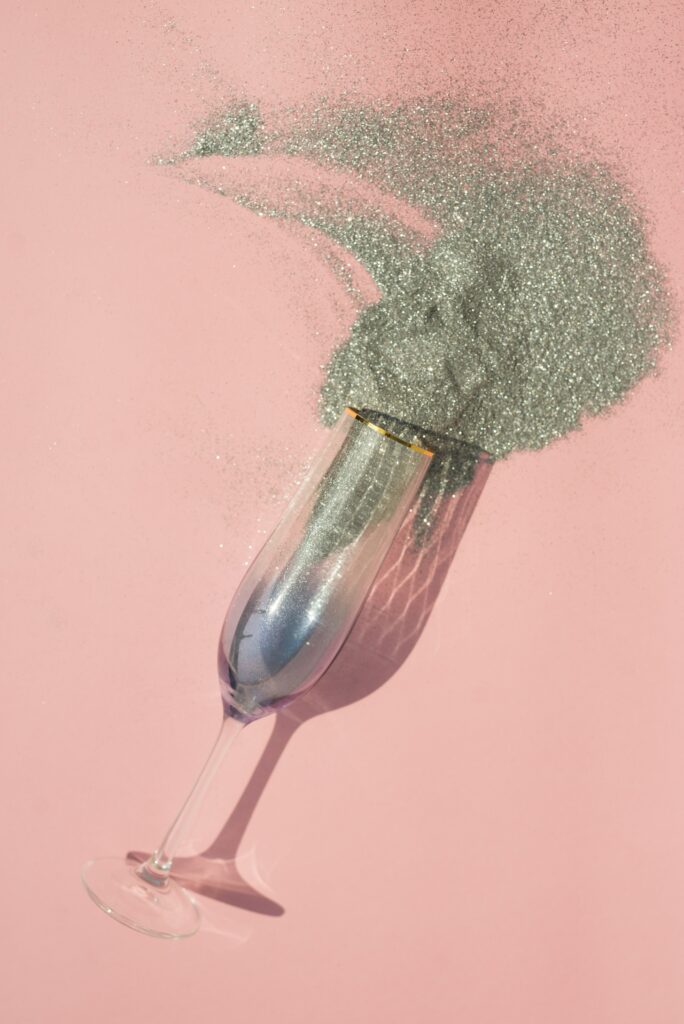
Extra Brut
Extra Brut Cava has a residual sugar content of less than 6 grams per liter, making it even drier than Brut. This style of Cava is characterized by its high acidity and is often aged for a longer period than Brut Cava.
Semi Seco
Semi Seco Cava has a residual sugar content of between 12 and 17 grams per liter, making it slightly sweet. This style of Cava is often enjoyed as an aperitif and pairs well with spicy foods.
Sweetness
The sweetest style of Cava is known as Dulce or Sweet. This style of Cava has a residual sugar content of more than 50 grams per liter and is often enjoyed as a dessert wine. It pairs well with fruit-based desserts and chocolate.
Overall, the style of Cava that one prefers is a matter of personal taste. Whether you prefer a dry, crisp Brut or a sweet Dulce, there is a style of Cava to suit every palate.
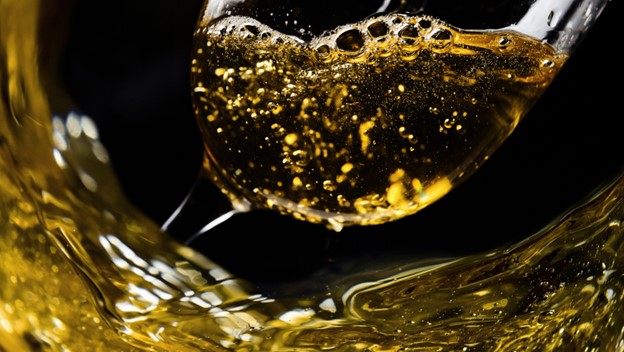
Tasting Cava
When it comes to tasting Cava, there are a few things to keep in mind. This section will cover the aged Cava and flavor profile of this sparkling wine.
Aged Cava
Cava is aged for a minimum of 9 months, but some varieties can be aged up to 36 months. The longer the aging process, the more complex and nuanced the flavors become. Aged Cava has a more pronounced flavor profile and a richer, creamier texture.
Flavor Profile
Cava is known for its bright acidity and crispness. It has a refreshing taste that is perfect for any occasion. The flavor profile of Cava can vary depending on the grape varieties used and the aging process.
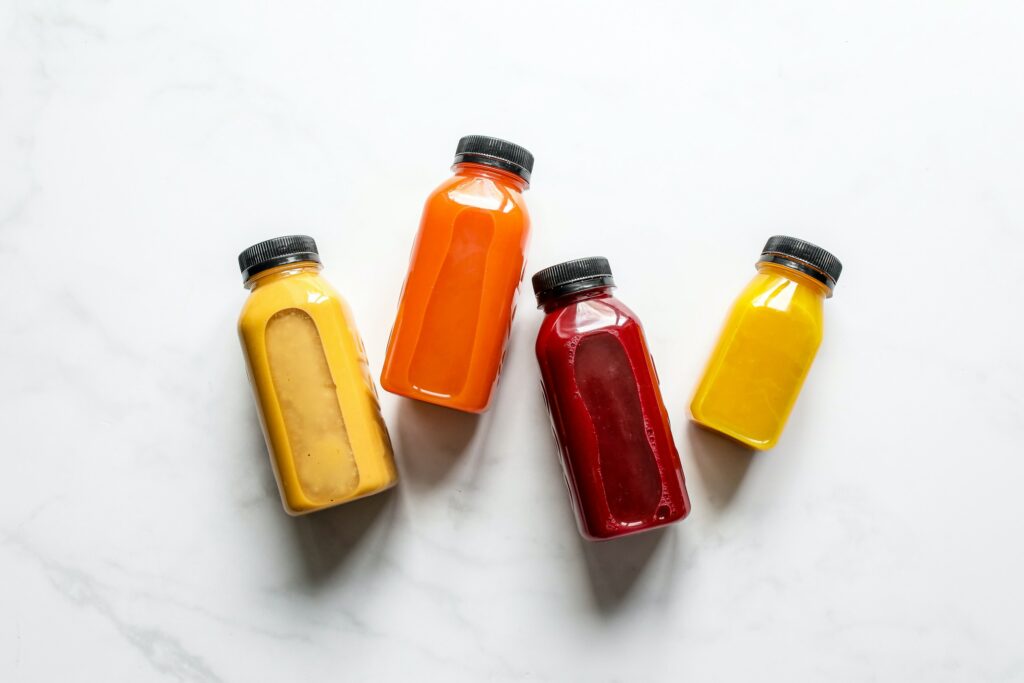
Here is a breakdown of the different grape varieties and their flavors:
- Macabeo: This grape variety adds a floral aroma and a citrusy flavor to Cava.
- Parellada: This grape variety adds a crisp apple and pear flavor to Cava.
- Xarel·lo: This grape variety adds a nutty and creamy flavor to Cava.
In addition to the grape varieties, the aging process can also affect the flavor profile of Cava. Here is a breakdown of the different aging classifications:
- Non-vintage: This is a blend of wines from different years and has a fresh and fruity taste.
- Reserva: Aged for a minimum of 15 months, this Cava has a more complex flavor profile with notes of toast and nuts.
- Gran Reserva: Aged for a minimum of 30 months, this Cava has a rich and creamy texture with a complex flavor profile that includes notes of honey and brioche.
In conclusion, the flavor profile of Cava can vary depending on the grape varieties used and the aging process. Aged Cava has a more complex and nuanced flavor profile, while non-vintage Cava has a fresh and fruity taste. When tasting Cava, pay attention to the grape varieties used and the aging classification to fully appreciate the flavors and textures of this sparkling wine.
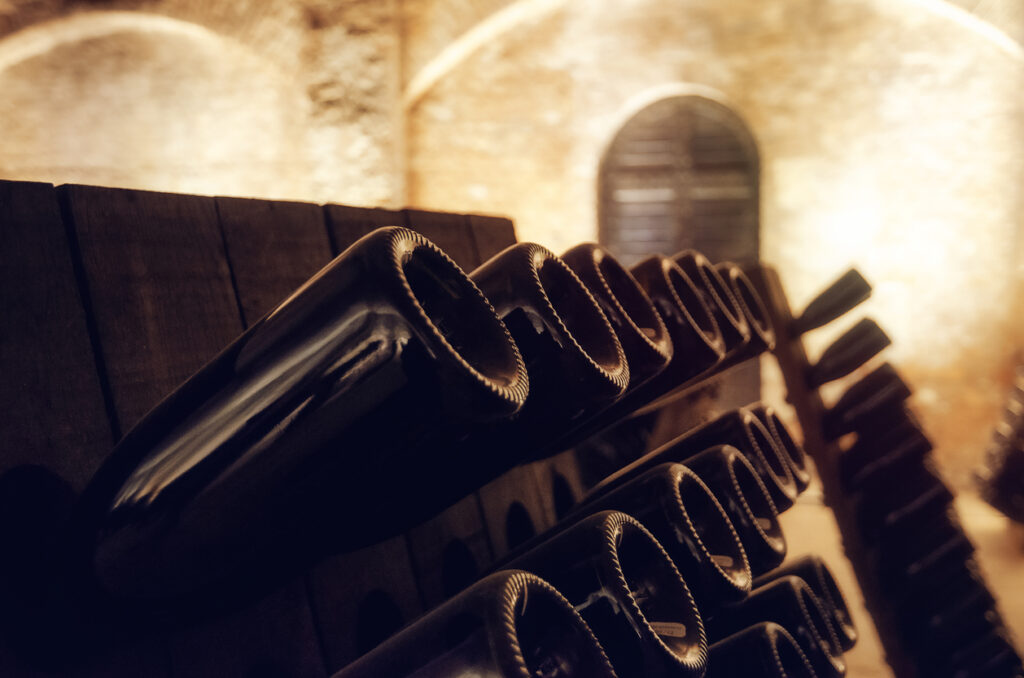
Comparison to Other Sparkling Wines
When it comes to sparkling wines, Cava is often compared to Champagne and Prosecco. While they are all effervescent wines, there are significant differences between them.
Champagne
Champagne is a sparkling wine that comes from the Champagne region of France. It is made using the méthode champenoise, which involves a secondary fermentation in the bottle. This process gives Champagne its signature bubbles and complex flavors. Champagne is typically made from Chardonnay, Pinot Noir, and Pinot Meunier grapes.
Compared to Cava, Champagne is generally more expensive due to its production process and the region where it is made. It also has a more complex flavor profile, with notes of brioche, toast, and citrus. Champagne is more effervescent than cava as the carbon dioxide pressure in champagne bottles is 6-8 bar whereas in Cava bottlers you only find 2-3 bar. Therefore champagne is more fizzy.

Prosecco
Prosecco is an Italian sparkling wine that is made using the Charmat method, which involves a secondary fermentation in stainless steel tanks. This process gives Prosecco its signature light and fruity flavor profile. Prosecco is typically made from the Glera grape.
Compared to Cava, Prosecco is generally less expensive and has a sweeter, fruitier flavor profile. It also has larger bubbles and a shorter aging process. Prosecco and Cava have a similar carbon dioxide pressure of 2-4 bar inside the bottle. Therefore they are less sparkling than champagne or cremant where you have a higher pressure.
Conclusion
While Champagne, Prosecco, and Cava are all sparkling wines, they have distinct differences in terms of production methods, flavor profiles, and price points. Cava offers a great value for those looking for a dry, refreshing sparkling wine with complex flavors. If you like the flavor profile of Cava and less bubbly sparkling wines Cava is the right choice for you!
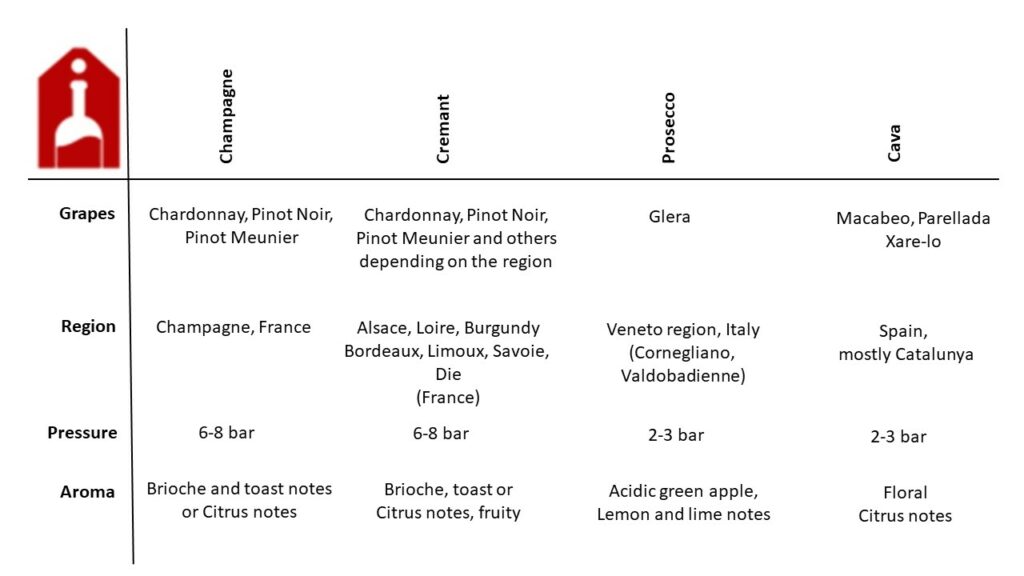
Food Pairing with Cava
Cava is a versatile wine that can be paired with a variety of foods. Its crisp acidity and effervescence make it an excellent complement to a range of dishes. Here are some food pairing suggestions for Cava:
Seafood and Fish
Cava pairs well with seafood and fish dishes. Its acidity and bubbles cut through the richness of the fish and complement its flavors. Some seafood and fish dishes that go well with Cava include:
- Oysters
- Scallops
- Salmon
- Shrimp
- Anchovies
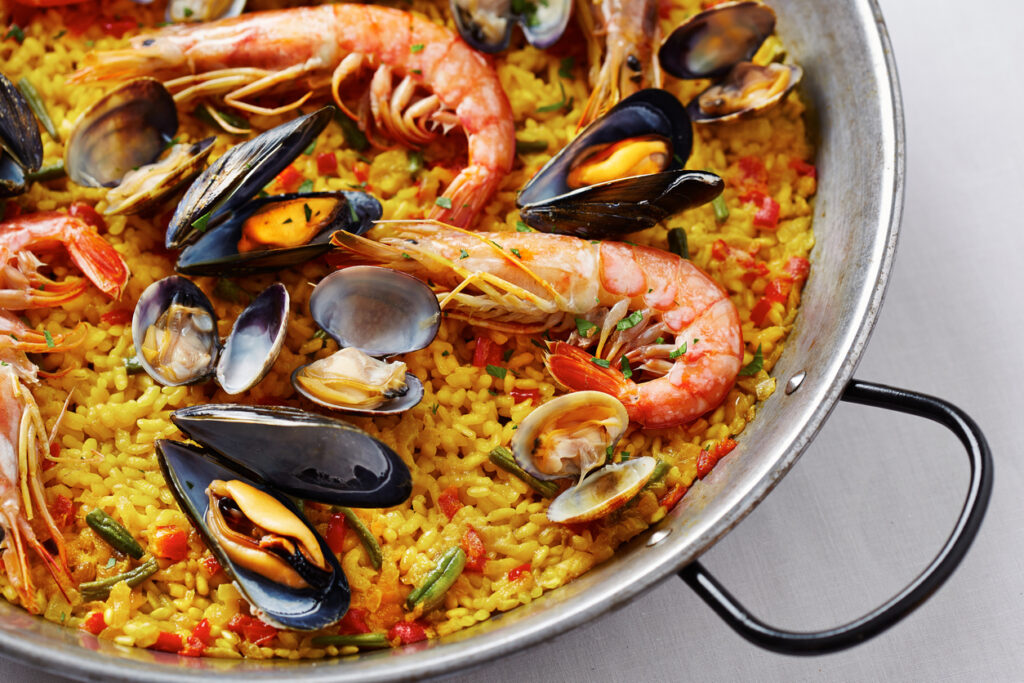
Ham and Tapas
Cava is a popular wine to pair with ham and tapas. Its light body and acidity make it a great match for these small, flavorful dishes. Some tapas that go well with Cava include:
- Artichokes and asparagus
- Fried chicken
- Caesar salad
- Paella
- Cheese
- Creamy sauces
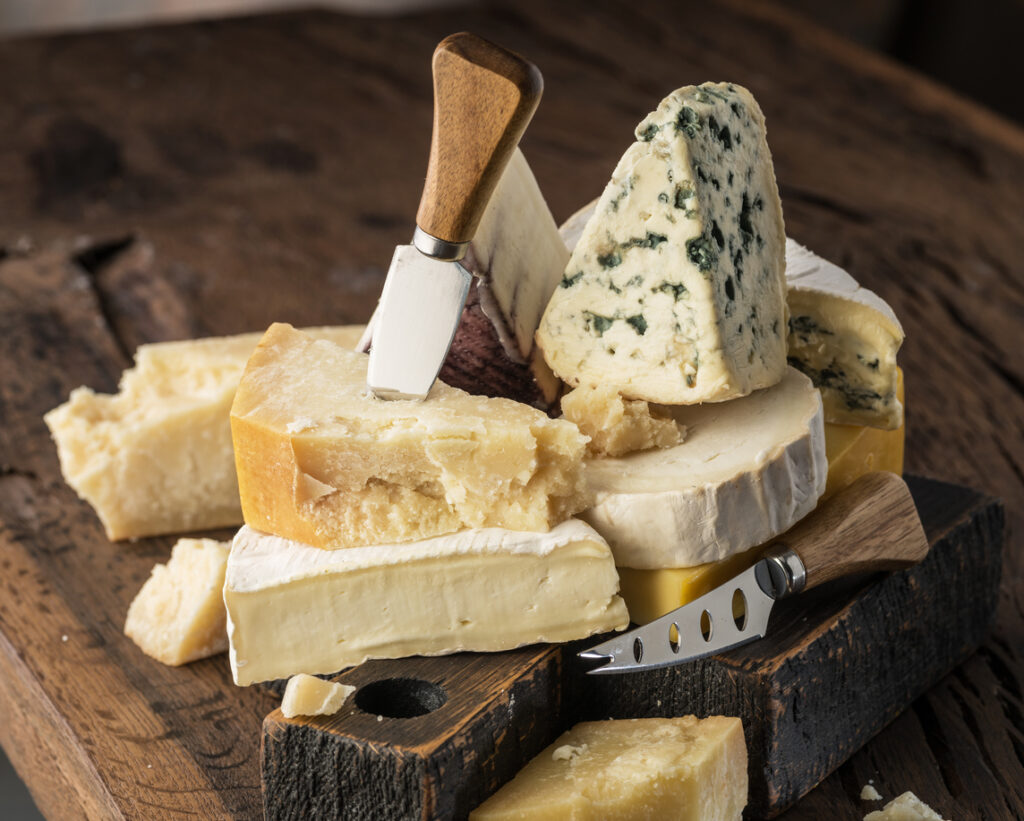
Desserts, Fruits, and Cheese
Cava can also be paired with desserts, fruits, and cheese. Its sweetness and bubbles complement the flavors of these foods. Some desserts, fruits, and cheese that go well with Cava include:
- Fresh berries
- Chocolate truffles
- Cheesecake
- Brie
- Gouda
Overall, Cava is a versatile wine that can be paired with a range of foods. Its acidity and effervescence make it an excellent complement to seafood, ham, tapas, desserts, fruits, and cheese.

